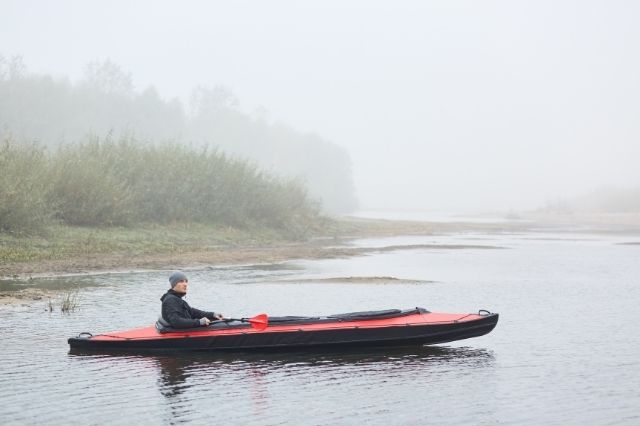Is paddling a pure warm-weather activity? Many people do prefer to glide through the water under the warmth of the summer sun. Nevertheless, outdoor enthusiasts can maneuver in the watercraft of their choice year-round—no matter the season or weather. Hardy folks can certainly reap the rewards of a cold-weather paddle with the right precautions.
If you choose to experience the joy of all-weather paddling, it’s a wise idea to stay on top of the risks involved. Hypothermia, dehydration, or cold shocks are potential problems paddlers face during autumn and winter. To help you make informed choices on the water, we’ve compiled a few top tips and tricks for paddling in cooler weather. Here’s what to keep in mind for your well-being.
Pick the Right Clothing: Layering
If you desire to safely paddle on a canoe or kayak during the cold seasons, staying warm and dry is of the essence at all times. You may already be familiar with the proper attire for the activity, but this type of weather proves tricky. Double and triple-check the weather before heading out on the water. Be sure to put on all your gear before leaving the house.
Layering is key for these kinds of excursions. You can always take extra layers off, but you cannot easily put on more internal layers when outside. Clad yourself in non-cotton layers. The best choice is a moisture-blocking layer and assorted outer layers for superior warmth and protection.
Don’t Overlook Your Hands and Feet
Properly protecting your hands and feet is another top tip for paddling in cooler weather. Let’s face it: you need something that keeps your hands and feet toasty warm, or you’ll be miserable. Thick socks and waterproof neoprene boots are the standards for your feet. No matter what, wear shoes with a thick rubber sole for a better protective grip.
Getting cold hands is inevitable during the cooler seasons. Paddling continually exposes your hands to wind, spray, and water. Grippy, waterproof gloves will make a world of difference.
Supplies: Plan for Any Possible Scenario
Anything can happen in the great outdoors. Always be prepared in some shape or form. Bring along a friend or family member. Whatever waterway you travel on, be sure to think over exit routes. Consider motorizing your personal watercraft to get back to shore in a jiffy before dark. Pack up additional emergency supplies in a trusty dry bag—just in case you get stuck outside for longer than expected.
Other backup safety supplies include a spare blanket, whistle, water purification tablets, food rations, and a fire-starting device. Don’t forget a PFD as a proven safety buffer. Even if the current environment is not the best-case scenario, you can keep safety and health at the forefront for the best possible adventure.



